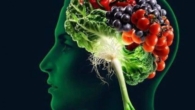
Quality of vision: what most often causes strabismus
0
Squint is a violation of the position of the eyes, in which the deviation of one or both eyes when looking straight ahead. As a rule, it develops in infants and children of a younger age, up to three years. But it can appear at a later age, and in some cases even in adults.
According to the Optometrist Network, strabismus affects up to 5% of the population. There are several forms of it. It can be both congenital and acquired, permanent or periodic, one or both eyes can squint.
By type of deviation, strabismus is:
- similar (in this case the eye is directed inwards – to the bridge of the nose);
- divergent (the eye is directed outwards – to the temple);
- vertical (deviation upwards or downwards);
- li>mixed.
What most often causes strabismus?
The condition can be caused by:
- bad the development of eye coordination (violation of binocular vision);
- a strong difference in the refraction of the eyes – if one eye sees much worse than the other, the brain will try to compensate for this difference, which also disrupts the synchronous movement of the eyes;
- weak eye muscles;
- head injury;
- stroke;
- brain tumors or other systemic health problems.
>
Squints often accompany severe farsightedness (hypermetropia) or amblyopia (the so-called lazy eye).
Symptoms of strabismus
The most common the symptom is a noticeable elimination of the eyes when looking directly. Also, developing strabismus can cause double vision.
Other symptoms may include:
- headaches;
- eye strain;
- li>
- difficulties while reading or fatigue.
It is especially important not to miss pathologies in children. If the child complains of any of these symptoms, it is recommended to see the doctor in a timely manner. The earlier the disease is diagnosed and treatment is started, the more successful the result will be. “Squints do not go away on their own, but they are usually treatable,” says consultant optometrist, Dr. Russell Lazarus.









Leave a Reply